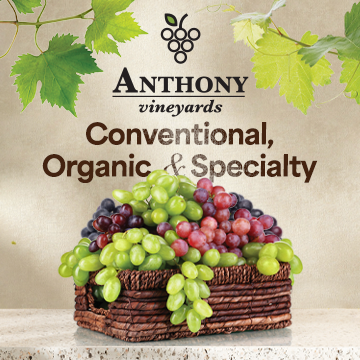AVONDALE, PA – Once believed to possess powers of immortality and reserved for royalty, mushrooms are now a superfood on the up-and-up as more consumers seek mushroom-based twists to their meat-forward faves. Stirring up mush-nados in the culinary world for not only being delicious, but also checking sustainability boxes, mushroom grower To-Jo gives us the inside scoop on the fungi category’s sustainability and growing process.
 Peter Wilder, Marketing Director, To-Jo Mushrooms“Opening up the so called behind-the-scenes curtain achieves the growing need from consumers to know where their food comes from and its effect on the environment,” Pete Wilder, Director of Marketing, tells me.
Peter Wilder, Marketing Director, To-Jo Mushrooms“Opening up the so called behind-the-scenes curtain achieves the growing need from consumers to know where their food comes from and its effect on the environment,” Pete Wilder, Director of Marketing, tells me.
With the meat industry slowly reducing its carbon footprint, water intake, and waste yield, many consumers are looking into alternatives offering quicker solutions. Mushrooms are one such alternative that not only boost health benefits and taste great, but also have a lower impact on the environment thanks to an eco-friendly growing process.
 A worker inspects brown baby bellas
A worker inspects brown baby bellas
Typically grown indoors, in limited spaces, and on a year-round cycle, mushrooms prosper in a nutrient rich compost that blends a variety of natural, raw materials recycled from other agricultural industries. This provides a nutritionally balanced organic material that serves as a growth medium for mushrooms to flourish. To-Jo alone recycles over 40,000 tons of farm byproducts a year. After the growing process is completed, the compost is then recycled again for new uses, like potting soil.
Before making their way to consumer’s plates, mushrooms traditionally undergo a four-phase growing process:
- Phase One: The raw materials for the compost are gathered, blended, and undergo 2 ½ weeks of decomposition before heading to the growing houses.
- Phase Two: The finished compost is transported and filled into the growing rooms for pasteurization—a 10-day conversion of natural gases that produces a nutritious environment for the mushrooms to grow.
- Phase Three: The mushroom seed or spawn, purchased from commercial labs, is planted into the pasteurized compost and is allowed to spread over an 18-day period.
- Phase Four: A casing, made of peat moss, is spread over the mushroom bed serving as a reservoir to hold in moisture and provides a medium for the root structure. During the pinning stage, “pins” of mushrooms push up through the casing and will begin to double in size every 24 hours prior to harvest.
Finally, after 11 weeks, the mushrooms are harvested by a team of skilled harvesters, picking each mushroom by hand over a 4-week period, called “breaks.”
 Workers sorting freshly picked white mushrooms
Workers sorting freshly picked white mushrooms
While the fungi category’s growing process is fairly complex, structure and controlled environments yield higher results, and each mushroom house typically receives three breaks from the raw materials used—meaning the entire bed is picked clean, and then the bed is regrown and picked again up to three times.
Modification of the mushrooms’ growing environment throughout the growth cycle is important to not only the quantity of mushrooms produced, but the quality of the finished product.
 Joe D'Amico, Vice President, To-Jo Mushrooms“Mushroom growing is truly a science, but more importantly not an exact science, in the sense that multiple independent variables, such as temperature, climate, and availability of raw materials can affect everything from compost quality to crop yield,” Joe D’Amico, Vice President, tells me. “We have a great team managing the process and are continually looking for ways to make the process more sustainable and efficient, ensuring only the freshest, environmentally friendly products are delivered out to our customers every week.”
Joe D'Amico, Vice President, To-Jo Mushrooms“Mushroom growing is truly a science, but more importantly not an exact science, in the sense that multiple independent variables, such as temperature, climate, and availability of raw materials can affect everything from compost quality to crop yield,” Joe D’Amico, Vice President, tells me. “We have a great team managing the process and are continually looking for ways to make the process more sustainable and efficient, ensuring only the freshest, environmentally friendly products are delivered out to our customers every week.”
 Workers ready to harvest Portabella Mushrooms
Workers ready to harvest Portabella Mushrooms
Compared to the 660 gallons of water required to produce one lb. of ground beef, a pound of mushrooms only needs 1.8 gallons of water. In response to this, and growing water shortages around the country, “The Blend” is on the rise in kitchens across America. Conceived by the Mushroom Council, Blending is a culinary technique that typically combines mushrooms with hamburger meat, but has recently been adapted to blend a variety of vegetables with any source of protein. Conscious of the environment, yet still packed with the burger flavors we love, The Blend is one of many dishes mushrooms, a chameleon of produce, have infiltrated for the better.
So, why mushrooms you ask? I say why not.
AndNowUKnow will continue to bring you the latest in produce industry trends.





